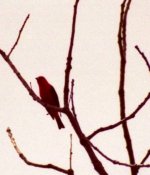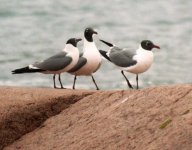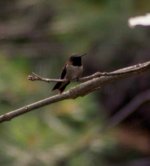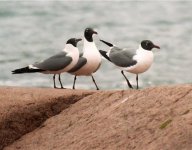birdpotter
Well-known member
I have attached three photos. I don't have a digital. These have all been copied from film onto a CD. I use a Nikon N60 with a 200-400mm lens.
I am not happy with how my backgrounds are in photos like the one with the Scarlet Tanager, and can't seem to get good clear shots. I could use a better lens, I am sure. The Hummingbird is a little dark, I am not sure how to combat that either. I would like to improve my photos with the camera, not the computer, seeing how my main records are on film, although it has been nice to have them on CD. I have had to resize all of these photos to fit the size requirements for the forum so besides poor background and dark shots, they are a little grainy.
I am not in a position to purchase any digital equipment, which of course would be the ideal answer...or even a larger lens.
I was just wondering if there were any old schoolers out there, who could give a few tips on photgraphing. I have been pleased every so often with my shots, but I am in need of improvement-I have hit a wall with my photography. Any advice would be helpful.
Best to all
Elizabeth
I am not happy with how my backgrounds are in photos like the one with the Scarlet Tanager, and can't seem to get good clear shots. I could use a better lens, I am sure. The Hummingbird is a little dark, I am not sure how to combat that either. I would like to improve my photos with the camera, not the computer, seeing how my main records are on film, although it has been nice to have them on CD. I have had to resize all of these photos to fit the size requirements for the forum so besides poor background and dark shots, they are a little grainy.
I am not in a position to purchase any digital equipment, which of course would be the ideal answer...or even a larger lens.
I was just wondering if there were any old schoolers out there, who could give a few tips on photgraphing. I have been pleased every so often with my shots, but I am in need of improvement-I have hit a wall with my photography. Any advice would be helpful.
Best to all
Elizabeth







